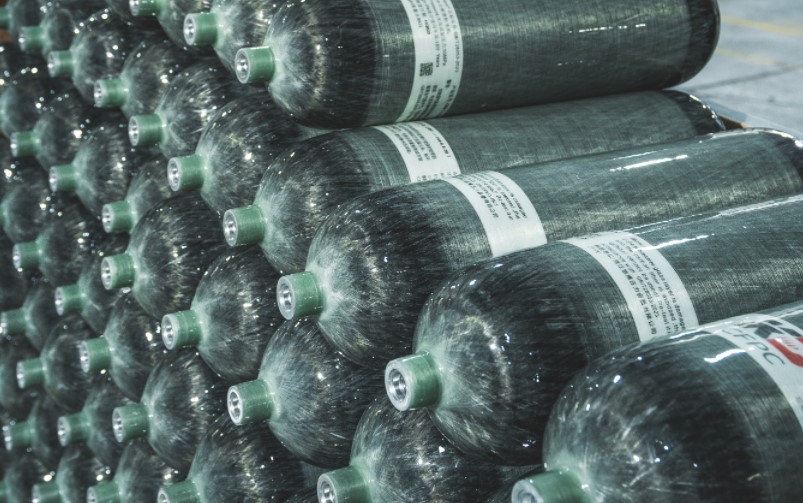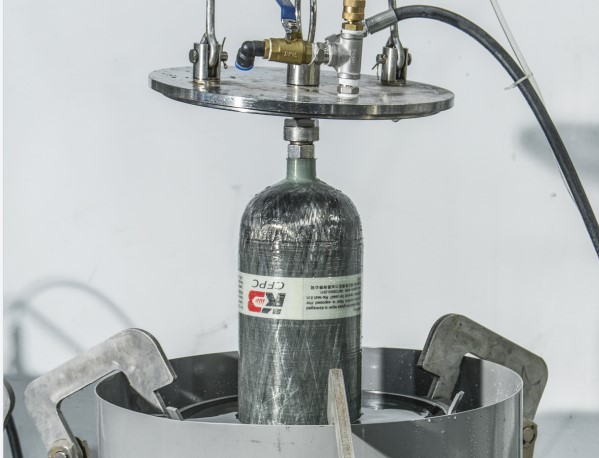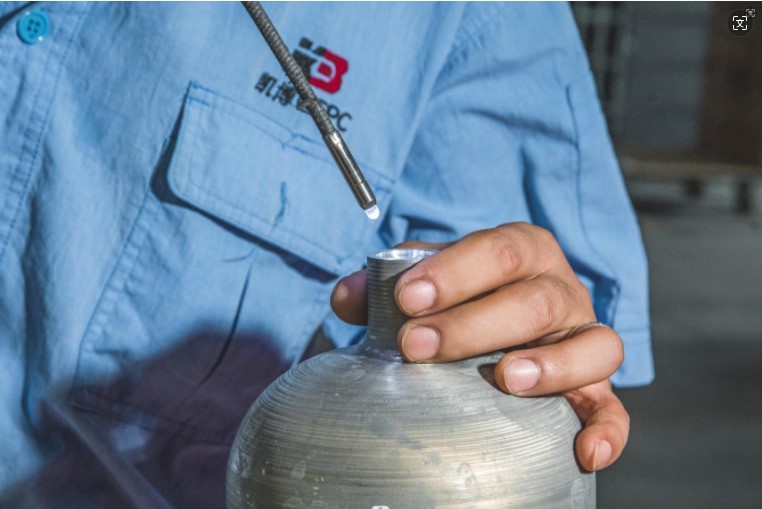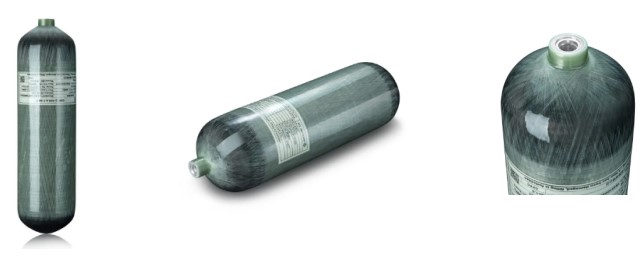Self-Contained Breathing Apparatus (SCBA) is essential for firefighters, rescue workers, and others working in hazardous environments. SCBA cylinders provide a critical supply of breathable air in areas where the atmosphere may be toxic or oxygen-deficient. To ensure the equipment works safely and effectively, it is important to maintain and replace SCBA cylinders regularly. In this article, we will focus on composite fiber-wrapped cylinders, particularly carbon fiber, which have a service life of 15 years. We’ll also explore the maintenance requirements, including hydrostatic testing and visual inspections.
What Are Composite Fiber-Wrapped SCBA Cylinders?
Composite fiber-wrapped SCBA cylinders are primarily constructed of a lightweight inner liner made from materials like aluminum or plastic, which is wrapped in a strong composite material like carbon fiber, fiberglass, or Kevlar. These cylinders are much lighter than traditional steel or aluminum-only cylinders, making them ideal for use in emergency situations where mobility is crucial. Carbon fiber-wrapped SCBA cylinders, in particular, are widely used because they provide the best combination of strength, weight, and durability.
Lifespan of Carbon Fiber-Wrapped SCBA Cylinders
Carbon fiber-wrapped SCBA cylinders have a typical lifespan of 15 years. After this period, they must be replaced, regardless of their condition or appearance. The reason for this fixed lifespan is due to the gradual wear and tear on the composite materials, which can weaken over time, even if no visible damage is present. Over the years, the cylinder is exposed to various stresses, including pressure fluctuations, environmental factors, and potential impacts. While composite fiber-wrapped cylinders are designed to handle these conditions, the material’s integrity decreases with time, which can pose safety risks.
Visual Inspections
One of the most basic and frequent maintenance practices for SCBA cylinders is visual inspection. These inspections should be conducted before and after each use to identify any visible signs of damage, such as cracks, dents, abrasions, or corrosion.
Key things to look for during a visual inspection include:
- Surface damage: Check for any visible cracks or chips in the cylinder’s outer composite wrap.
- Dents: Dents or deformation in the cylinder’s shape could indicate internal damage.
- Corrosion: While composite fiber-wrapped cylinders are more resistant to corrosion than metal ones, any exposed metal parts (such as the valve) should be checked for signs of rust or wear.
- Delamination: This occurs when the outer composite layers start to separate from the inner liner, potentially compromising the cylinder’s strength.
If any of these issues are found, the cylinder should be removed from service immediately for further evaluation.
Hydrostatic Testing Requirements
In addition to regular visual inspections, SCBA cylinders must undergo hydrostatic testing at set intervals. Hydrostatic testing ensures that the cylinder can still safely contain high-pressure air without risking rupture or leaks. The test involves filling the cylinder with water and pressurizing it beyond its normal operating capacity to check for any signs of expansion or failure.
The frequency of hydrostatic testing depends on the type of cylinder:
- Fiberglass-wrapped cylinders need to be hydrostatically tested every three years.
- Carbon fiber-wrapped cylinders need to be tested every five years.
During the test, if the cylinder expands beyond acceptable limits or shows signs of stress or leaks, it will fail the test and must be removed from service.
Why 15 Years?
You may wonder why carbon fiber-wrapped SCBA cylinders have a specific 15-year lifespan, even with regular maintenance and testing. The answer lies in the nature of composite materials. While incredibly strong, carbon fiber and other composites are also subject to fatigue and degradation over time.
Environmental factors such as temperature changes, exposure to sunlight (UV radiation), and mechanical impacts can gradually weaken the bonds in the composite layers. Even though these changes may not be immediately visible or detectable during hydrostatic testing, the cumulative effects over 15 years significantly increase the risk of failure, which is why regulatory agencies, such as the Department of Transportation (DOT), mandate replacement at the 15-year mark.
Consequences of Ignoring Replacement and Maintenance
Failing to replace or maintain SCBA cylinders can lead to disastrous consequences, including:
- Cylinder failure: If a damaged or weakened cylinder is used, there’s a risk of it rupturing under pressure. This could cause serious injury to the user and others nearby.
- Reduced air supply: A damaged cylinder may not be able to hold the required amount of air, limiting the user’s available breathable air during a rescue or firefighting operation. In life-threatening situations, every minute of air counts.
- Regulatory penalties: In many industries, compliance with safety regulations is mandatory. Using outdated or untested cylinders can lead to fines or other penalties from safety regulators.
Best Practices for SCBA Cylinder Maintenance and Replacement
To ensure SCBA cylinders remain safe and effective throughout their lifespan, it’s important to follow these best practices:
- Regular visual inspections: Check cylinders for any signs of damage before and after each use.
- Scheduled hydrostatic testing: Keep track of when each cylinder was last tested and ensure it is re-tested within the required timeframe (every five years for carbon fiber-wrapped cylinders).
- Proper storage: Store SCBA cylinders in a cool, dry place, away from direct sunlight or extreme temperatures, which can accelerate material degradation.
- Replace on time: Do not use cylinders beyond their 15-year lifespan. Even if they appear to be in good condition, the risk of failure increases significantly after this time.
- Keep detailed records: Maintain logs of inspection dates, hydrostatic test results, and cylinder replacement schedules to ensure compliance with regulations and safety protocols.
Conclusion
SCBA cylinders, particularly carbon fiber-wrapped ones, are an essential piece of equipment for those working in hazardous environments. These cylinders offer a lightweight yet durable solution for carrying compressed air. However, they come with strict maintenance and replacement requirements to ensure safety. Regular visual inspections, hydrostatic testing every five years, and timely replacement after 15 years are key practices that help keep SCBA cylinders reliable and safe to use. By adhering to these guidelines, users can ensure they have the air supply they need when it matters most, without compromising safety.
Post time: Sep-13-2024




